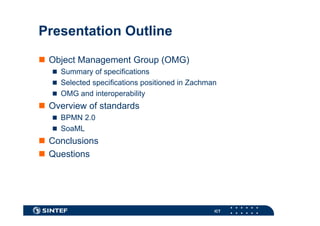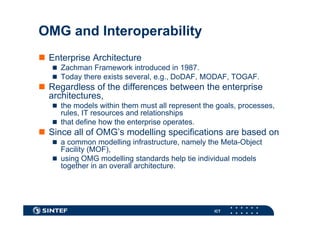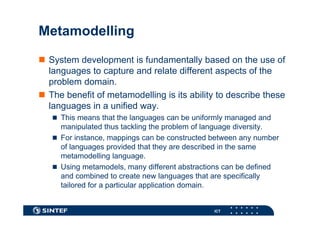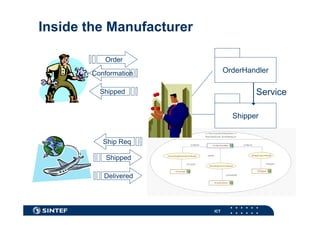The document outlines the Object Management Group's (OMG) specifications for enterprise interoperability, focusing on various modelling standards and initiatives such as BPMN 2.0 and SOAML. It also discusses the importance of a common modelling infrastructure, the Zachman framework, and the relevance of business modelling specifications to enterprise architecture. The document concludes by emphasizing OMG's role in promoting interoperability through standardized specifications.


























